How a Small Tamil Village Is Keeping India’s Ancient Pottery Tradition — and Identity — Alive
“If the fire burns too fast, the pot breaks. But if we give it time, it becomes strong — just like us,” says Selvam, a second-generation potter in Chunkankadai, gently brushing the clay from his palms as if handling something sacred.
His words aren’t just about pottery — they echo the slow, deliberate resilience of a craft and community shaped by earth, fire, and generations of memory.
Tucked away near Nagercoil in Tamil Nadu, the village of Chunkankadai is a place where time moves to the rhythm of the potter’s wheel. Situated approximately three kilometers from Nagercoil, along the Nagercoil-Thiruvananthapuram road, Chunkankadai boasts a landscape adorned with lush green trees, paddy fields, and serene ponds. I arrived here not as a buyer or a trader, but simply curious. I wanted to understand how these humble clay pots — often taken for granted in our kitchens and gardens — are born.
What I found was a living, breathing legacy of craft, community, and quiet pride. The village is home to several pottery establishments, where artisans continue to shape clay into functional art, preserving techniques passed down through generations. Their dedication ensures that the tradition of pottery remains an integral part of Chunkankadai’s cultural fabric.
While pottery is practiced in many parts of India, Chunkankadai’s craft carries a deeper cultural and historical resonance that sets it apart. Though geographically in Tamil Nadu, the village was once under the jurisdiction of the Travancore royal family, whose influence shaped not only governance but also spiritual and artisanal life in the region.
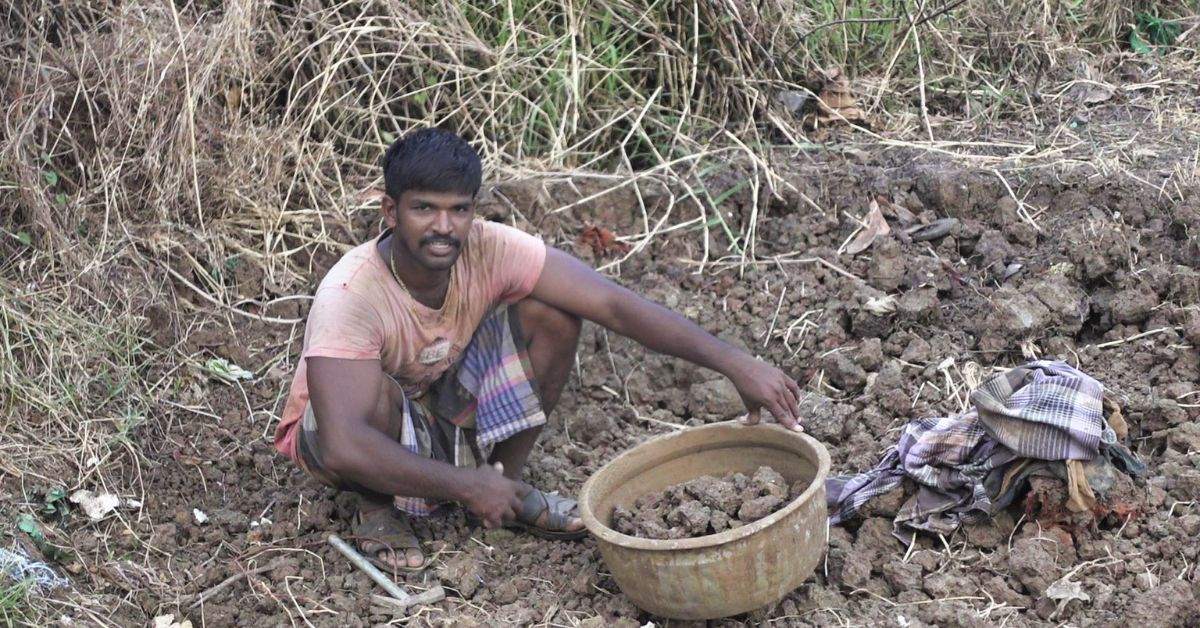 The potters of Chunkankadai rely on a locally known as kalimannu, a dark, dense soil found at the bottom of these water bodies.
The potters of Chunkankadai rely on a locally known as kalimannu, a dark, dense soil found at the bottom of these water bodies.
The bond between Chunkankadai’s families and pottery runs deep — rooted in ancestry, spirituality, and caste identity. Most potters here belong to the Velar community, a traditional Tamil artisan group whose name means “those of the earth.” Mythology traces their lineage to Kulalan, son of the creator god Brahma, who was granted the divine role of shaping and returning clay — making pottery a sacred act tied to creation itself.
Historically, the Velars are believed to have settled in Chunkankadai during the Travancore reign, when kings assigned artisan castes to specific villages. With royal patronage and ritual demand, pottery became a cultural cornerstone — a tradition that continues even after the fall of royal rule.
Pottery here isn’t merely utilitarian — it’s ritualistic. The region’s deep ties to Hindu temple culture, especially that of the Travancore tradition, meant that earthen pots became indispensable to sacred practices. Ceremonies like Kalashapooja, which involves the symbolic use of a kalasham (a sanctified pot), depend on specific clay vessels shaped for the occasion.
Equally significant is the Pongala ritual, practiced in Devi temples across southern Kerala and the Kanyakumari district. In this deeply communal offering, women prepare sweet porridge in rows of earthen pots as an act of devotion. Many of these pots — thousands, during festivals — are sourced directly from Chunkankadai.
From pond to pot: where clay becomes craft
The journey begins in the most unassuming of places — a pond. The potters of Chunkankadai rely on a special kind of clay, locally known as kalimannu, a dark, dense soil found at the bottom of these water bodies. This isn’t surface mud, but a sediment that has settled through seasons of rain and streamflow. “It’s not just about digging,” explains Kannan, another potter. “We know which pond gives which clay. That knowledge is inherited — you learn it with your hands.”
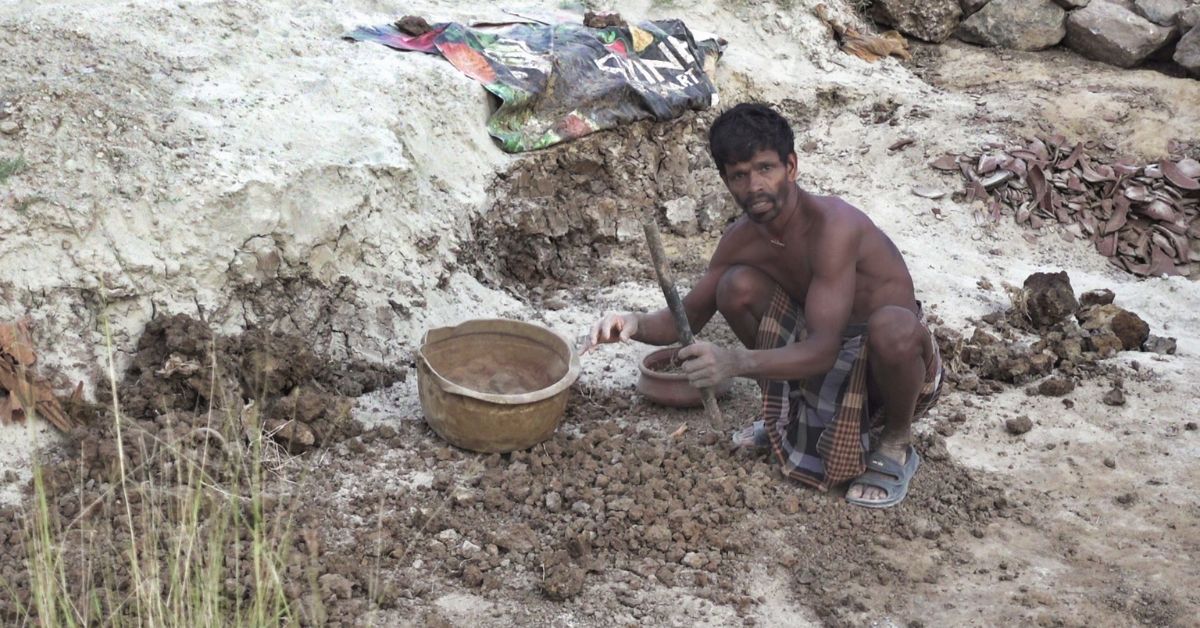 The clay is sun-dried, cleaned of stones and roots, and then stored in mounds
The clay is sun-dried, cleaned of stones and roots, and then stored in mounds
Each pond has its own identity. Some yield kalimannu, thicker and more plastic. Others produce chemmanakali, lighter, brownish and suited for specific types of vessels. Artisans mix these types based on what they plan to make — be it a matka, a sambadam (storage pot), or a decorative diya.
Once excavated, the clay is sun-dried, cleaned of stones and roots, and then stored in mounds, ready to be transformed. The potters know their soil just like a baker knows their flour. Texture, moisture, and colour all guide their decisions. “This soil is our life,” Kannan adds. “Without it, we are nothing. With it, we are creators.”
The potter’s dance: hands that remember
Inside the modest homes of Chunkankadai, the hum of the wheel is a familiar sound. Most potters here use manual kick-wheels, made from wood and iron — traditional, sustainable, and entirely powered by human effort. The physicality of the craft is evident in every movement.
Two types of clay are mixed with sand, which they locally call podimanal, or powdered fired clay to reduce shrinkage and increase strength. Then, they press it by hand multiple times before it’s deemed ready to spin. Watching the potter’s wheel is watching memory in motion. “We don’t draw or plan much,” says Selvam, spinning a small pot without breaking eye contact. “Our hands remember the shape.”
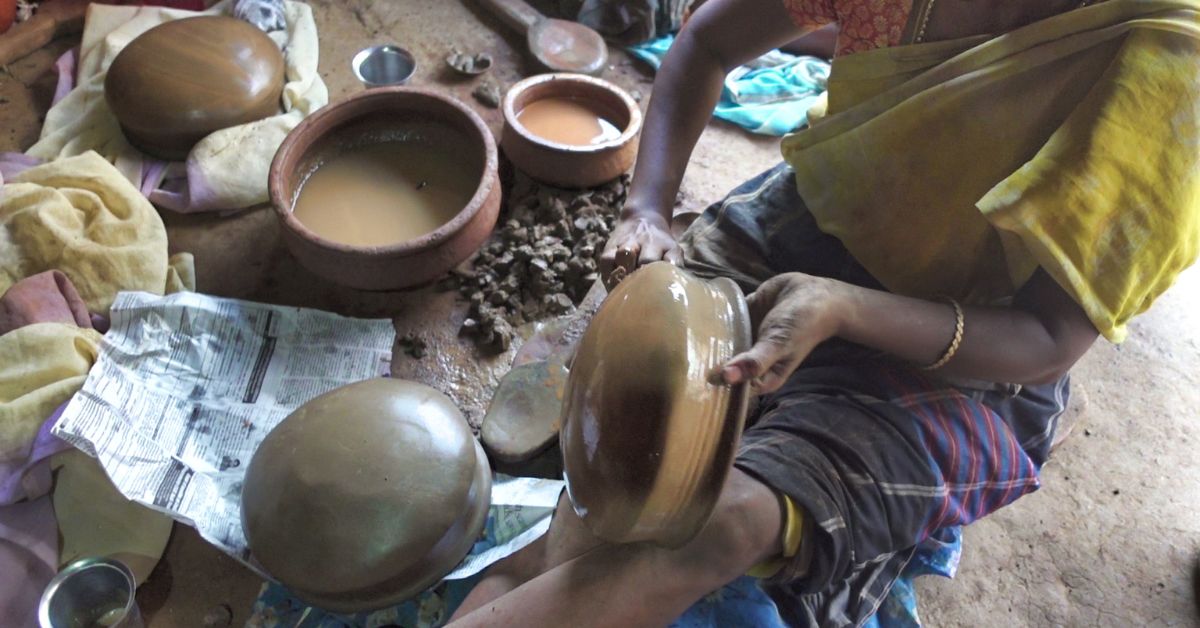 Younger artisans are leaving, drawn to city jobs with more security.
Younger artisans are leaving, drawn to city jobs with more security.
Within minutes, the raw clay is transformed into a pot. Each movement is intentional — a curve here, a lift there. No two pots are the same. That’s the charm, and the challenge. The outer layer is shaped but the bottom remains unsealed. That’s done later using a technique called moottu thattall — a local method of refining the pot’s surface using a wet flat stone, which compresses the clay, makes it smoother, and reduces porosity.
“There’s beauty in imperfection,” Selvam says. “A little wobble, a slight tilt — these remind us it’s made by hand, not a factory.”
Once dried in the shade for a few hours or days (depending on humidity), the pots are loaded into an open kiln — a wood-fired furnace made of bricks and mud. This is where skill meets science. Firing begins around 11 AM, starting with a small fire that gradually builds.
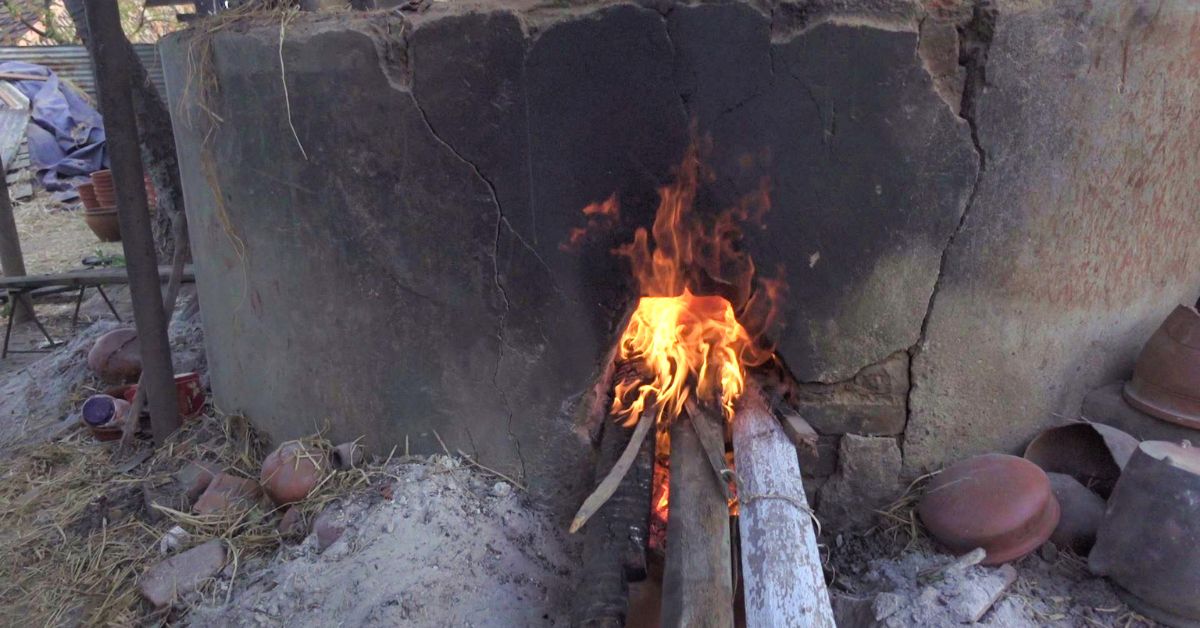 The colour of the pots deepens depending on the soil mix and firing temperature
The colour of the pots deepens depending on the soil mix and firing temperature
“We start slow,” explains Rajathi, who oversees the kiln in her home. “If we fire too fast, the pots will crack. It’s like cooking — low flame first.” The heat rises steadily, and by afternoon, the kiln reaches its peak temperature. The pots glow orange inside, slowly hardening into permanence. Firing typically lasts three to three and a half hours. Then the real test begins — the wait.
The kiln is left sealed overnight to cool. “Opening it too early is risky,” says Rajathi. “But sometimes we check at dawn — just to see.” The next morning, the pots emerge — durable, vibrant, and ready for use. Their colour deepens depending on the soil mix and firing temperature, ranging from deep red to burnt sienna.
Chunkankadai is more than a cluster of homes — it’s a living ecosystem of artisans. Each family plays a role. Some focus on sourcing and preparing the soil. Others are skilled at shaping specific items. A few families manage the kiln. Children often help in cleaning the clay or painting decorative designs during festivals.
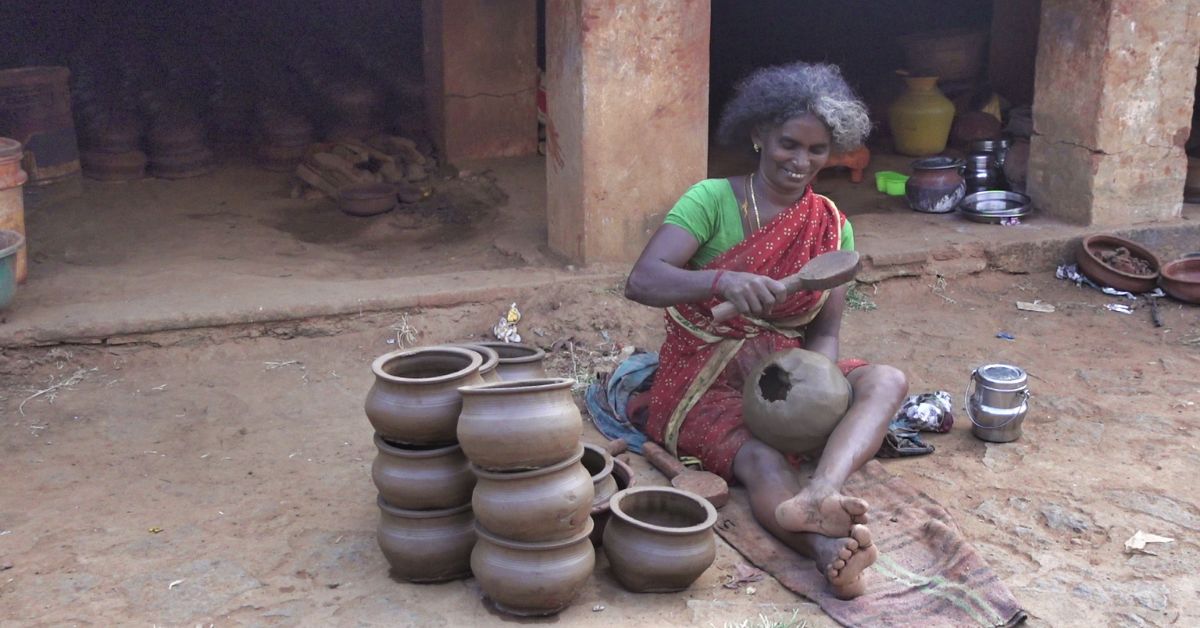 The work is physically demanding, and profits, though steady, are modest.
The work is physically demanding, and profits, though steady, are modest.
The shops closer to the settlements act as a local hub, where tourists and locals alike come to buy directly from the makers. This is crucial — it removes middlemen and allows artisans to earn fairly for their work. Most of the village’s crafts are sold in Kerala, to towns like Guruvayoor, Thrissur, and Kottappuram.
“Traders used to come and go,” says Kumar, who manages logistics for a group of artisans. “But we prefer to handle it ourselves now. It’s slower, but it’s ours.” In a world obsessed with speed and uniformity, Chunkankadai offers something different: deliberation, uniqueness, and soul.
Craft, culture, and the future
But all is not rosy. As with many traditional crafts, rural pottery faces the threat of obsolescence. Younger generations are drawn to city jobs. The work is physically demanding, and profits, though steady, are modest. “There was a time when almost every house here had a wheel,” says Selvam. “Now, maybe 10 or 12 are active. The rest? They’ve gone to other work.”
Yet, there are flickers of hope. Some non-governmental organisations and design schools have started engaging with rural potters to revive interest and innovate with form and function. Eco-conscious consumers are slowly returning to clay over plastic and metal, especially for water storage and home décor. What could help further? Recognition, better access to raw materials, subsidies for kiln maintenance, and digital platforms for direct sales.
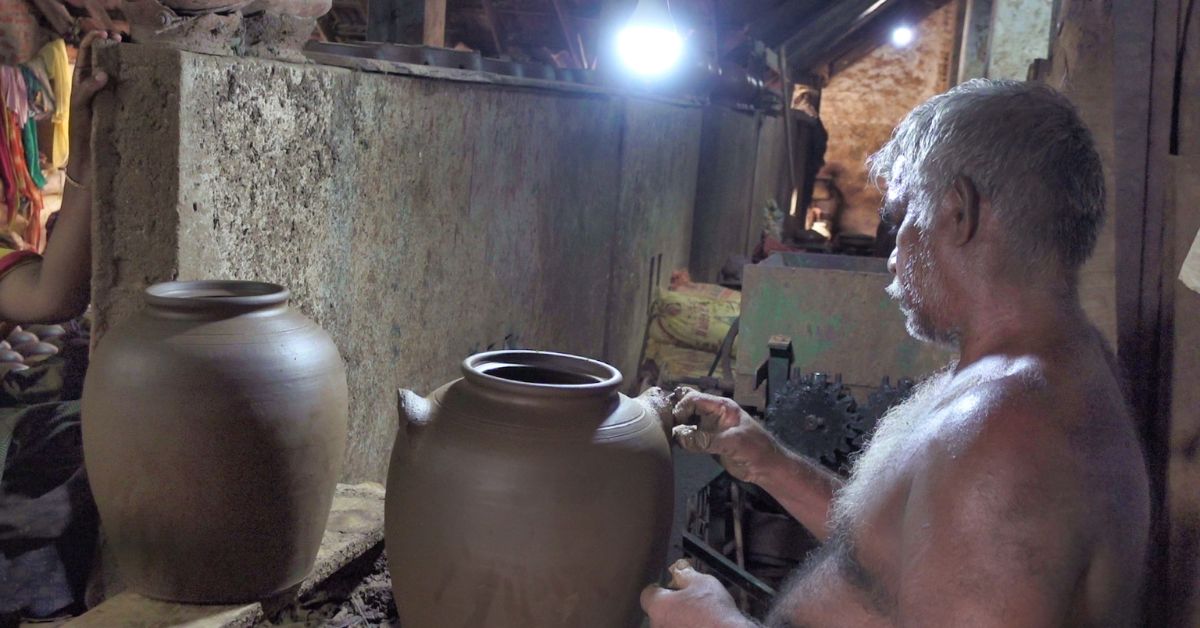 The shops closer to the settlements act as a local hub, where tourists and locals alike come to buy directly from the makers.
The shops closer to the settlements act as a local hub, where tourists and locals alike come to buy directly from the makers.
“This isn’t just a job,” says Rajathi. “It’s our way of speaking without words.”
Today, the life of a potter is filled with growing challenges. The once-reliable kalimannu clay is becoming scarce, as traditional ponds dry up or vanish under urban pressure. Without this clay, the very craft stands on uncertain ground. On top of that, mass-produced alternatives — plastic, steel, and aluminium — dominate the market. “Why wait for a handmade pot when you can buy a steel one in minutes?” asks Kumar, echoing a sentiment that’s slowly sidelining tradition.
A generational shift adds to the strain. Younger artisans are leaving, drawn to city jobs with more security. “We can’t force our children,” says Selvam. “But it hurts to think this might end with us.” In response, some have adapted — opening small workshops and working independently. It’s a way to survive, but also a shift from shared heritage to solitary effort.
Still, those who stay see their work as more than craft — it’s resistance. A quiet refusal to let memory, meaning, and identity disappear. “We don’t just make pots,” says Rajathi. “We remind people that not everything should come from a machine. Some things come from the earth — and from us.”
Why it matters
Pottery is one of India’s oldest crafts — a tradition older than the written word. In villages like Chunkankadai, it is not just preserved but practised and lived. Every pot tells a story — not just of clay and fire, but of patience, place, and people. By supporting such communities — buying their products, sharing their stories, and advocating for their rights — we aren’t just saving a craft, we’re honouring a way of life. So the next time you hold a clay pot, think of the pond where its journey began. Think of the hands that shaped it, the fire that gave it form, and the morning when it emerged whole.
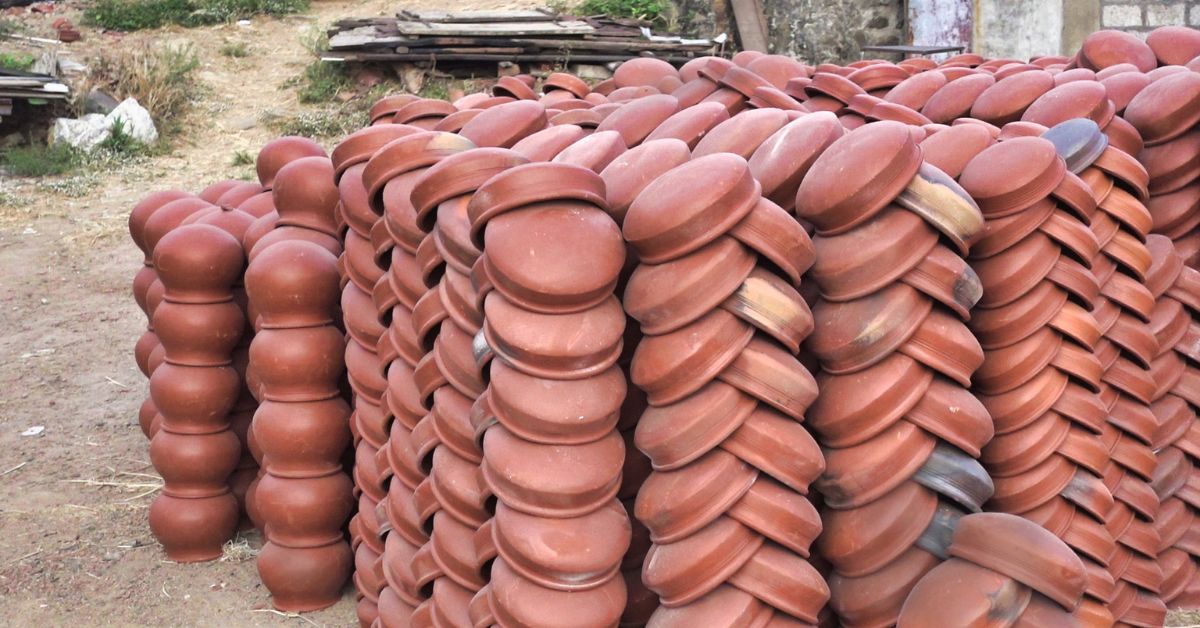 By supporting local communities like buying their products, sharing their stories, and advocating for their rights, we honour a way of life.
By supporting local communities like buying their products, sharing their stories, and advocating for their rights, we honour a way of life.
As I prepared to leave Chunkankadai, the rhythmic thump of a potter’s wheel still echoed in my mind. There is no signboard here declaring it a heritage village, no tourist brochures, no subsidies or flashy campaigns. But what exists is far more powerful — a community grounded in craft, where every fingertip has memory, and every household carries a story. The pots represent a quiet resistance — a belief that even in a world of machines, there’s space — and need — for things made by hand, with patience, purpose, and pride.
We often speak of sustainability in global terms. However, it begins with the soil. With reuse. With materials sourced not from catalogs, but from memory and land. Every pot is biodegradable. Every process is local. Every product carries the fingerprint of its maker.
Selvam’s parting words linger with me even now. “It’s slow work. But slow things stay. Fast things come and go.”
All images courtesy Akhil Rajarathinam
News